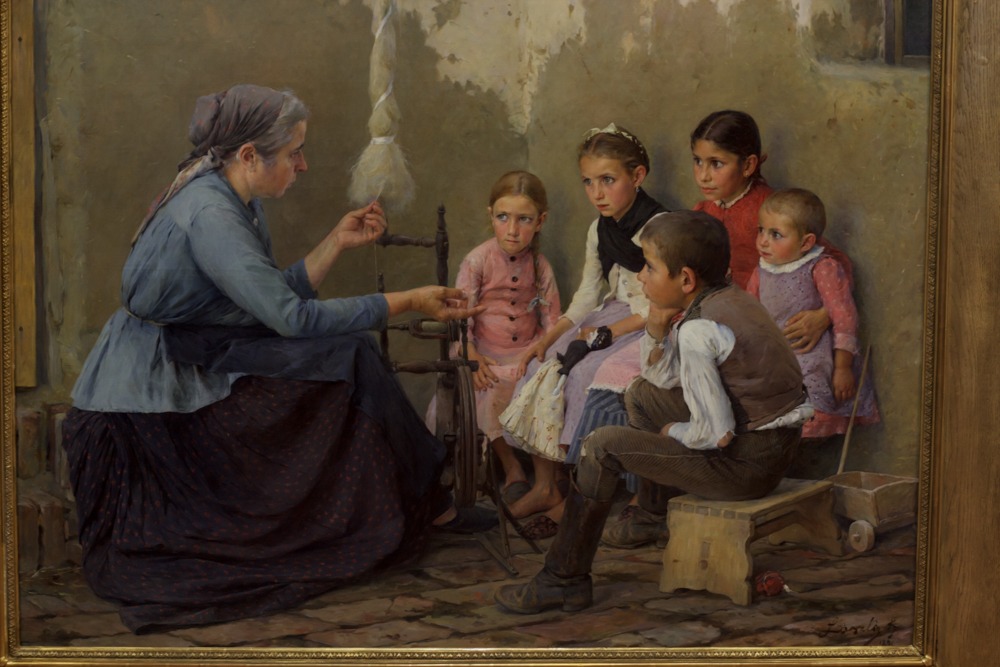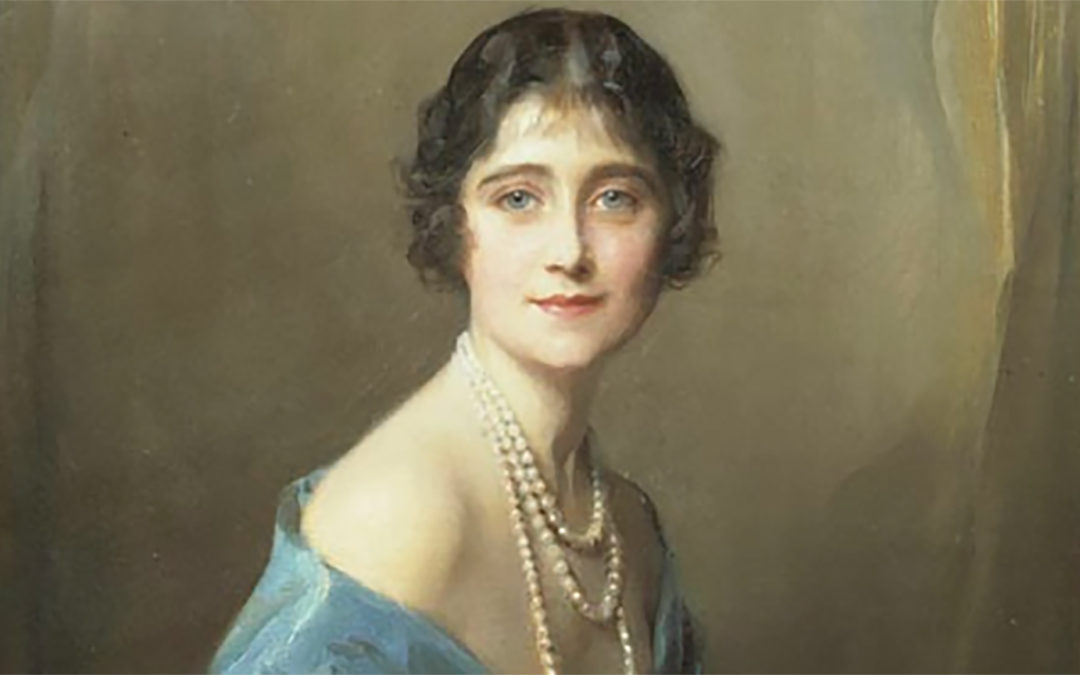In this article, I wish to introduce a painter who is one of my very favourites.
He had an incredible skill, not just for painting portraits from life in a few hours, but to pose his subjects in a sophisticated manner in order to reveal their character. His style is only classic, elegant and recognisable.
His name is Philip de László.
Before we look more into his life and personality, let me just give you a short list of his accomplishments to grab your attention. This is just a fragment of his full list of sitters:
- King Edward VII of the United Kingdom 1907
- Queen Elizabeth, The Queen Mother 1925,1931
- Queen Elizabeth II of the United Kingdom (former Princess Elizabeth of York) 1933
- King George VI of the United Kingdom 1931
- Prince George, Duke of Kent 1934
- Princess Louise, Duchess of Argyll 1915
- Princess Marina, Duchess of Kent 1934
- Emperor Franz Joseph I of Austria 1896
- Empress Elizabeth of Austria (posthumous, 1898-99)
- Wilhelm II, Emperor and King of Prussia, Germany, 1908
- King Ferdinand I of Bulgaria, 1894
- King Constantine I of Greece 1914
- Queen Olga of Greece 1914
- King Alfonso XIII of Spain 1927
- Queen Victoria Eugenia of Spain (1910)
- Queen Louise of Sweden (1907)
- King Fouad of Egypt, 1929
- King Feisal I of, né Feisal Ibn Hussein; formerly Emir Feisal Iraq,1921
- King Umberto II of, Prince of Piedmont, Italy 1928
- King Gustaf V of Sweden, 1922
- Prince Yasuhito Chichibu of Japan, 1937
- Queen Marie of Romania 1924
- U.S. President Theodore Roosevelt 1910
- U.S. President Warren Gamaliel Harding,1921
- U.S. President Hoover, Herbert; 1931
- U.S. President Calvin Coolidge 1926
- Prince Andrew of Greece (1913)
- Princess Andrew of Greece 1907
- William Cavendish-Bentinck, 6th Duke of Portland 1912
- Arnold Keppel, 8th Earl of Albemarle 1916
- Princess Charlotte of Monaco 1928
- Prince Louis II of Monaco 1928
- Louis Mountbatten, 1st Earl Mountbatten of Burma 1925
- Princess Alice, Countess of Athlone 1929
- Princess Nina Georgievna of Russia 1915
- Pope Leo XIII 1900
- Randall Davidson, Archbishop of Canterbury 1926
- Joseph Ferguson Peacocke, Archbishop of Dublin 1908
- Cosmo Gordon Lang, Archbishop of Canterbury 1932
Has there ever been any other painter who painted so many eminent, and noble people?
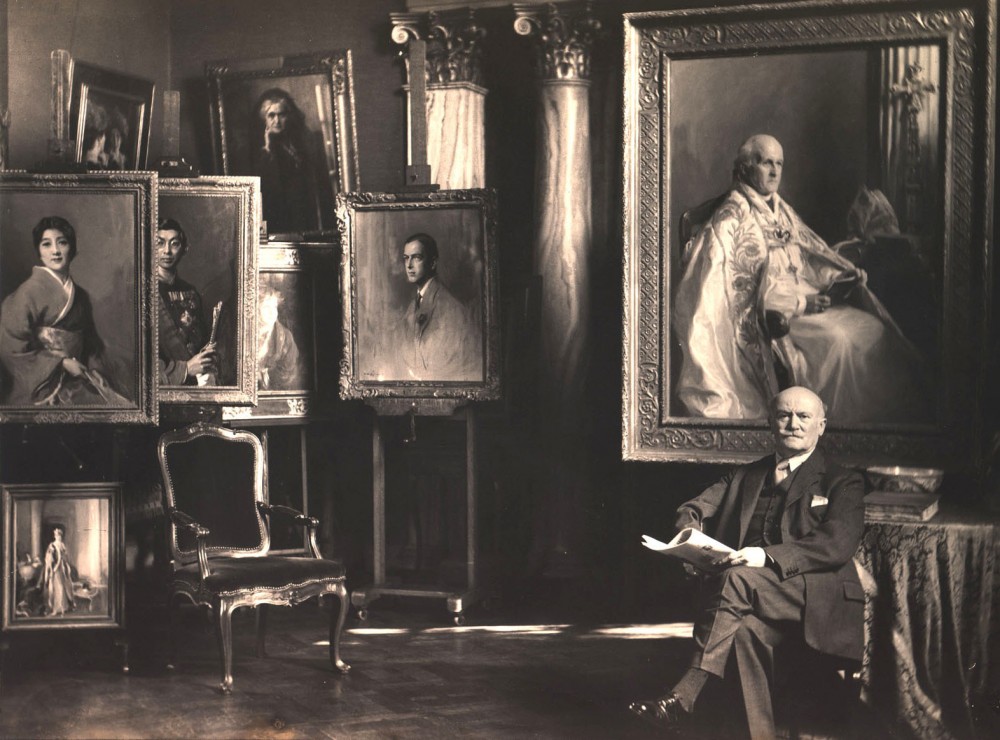
As he said: “I am an artist of the world, and paint history, not only individuals.” and he painted the most famous personages, figures, persons, dukes, princesses, queens, and kings, presidents, and religious leaders, regardless of country and nationality.
Every time he painted a portrait he gained a friend.
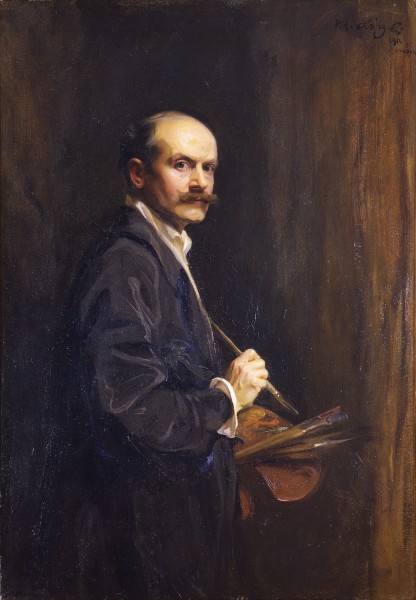
“In 1911, at The Uffizi Gallery, Florence asked him to paint his self-portrait to the ‘Gallery of Immortals’ in the Vasari corridor, in which hang the self-portraits of the greatest painters since the Renaissance, including Titian, Rubens, Van Dyck, Vélasquez, Reynolds, Ingres.
He held twenty-two orders, and seventeen medals of merit bestowed on him by royal and presidential sitters.”
He was incredibly prolific, with about 4000 artworks, some of his paintings are still missing or their whereabouts are unknown.
I don’t want to go into the details about his life, as this article would be not long enough, and at only a couple of lines, could not say much about a life lived.
What I would like to do, is to reveal a couple of moments from his life, that touched me, and have shown his character. (I could copy and paste here the 4000 paintings, but let us skip that:))
In his student life, he studies in Budapest, Munich and Paris. When he arrives in Paris, he meets two of his friends who took him to the Bal Bullier in Montparnasse. The bohemian life of the Montparnasse is not for him. As he said himself: “I always kept aloof from that side of student life, which, thank God, remained foreign to my nature.”
He just loved to paint, and that is all he did.
Still, in Paris, he meets his “hero” an inspirational painter, Mihaly Munkacsy. As a young boy, he admired and been moved by the monumental four by a six-meter painting of Christ Before Pilate, by Munkacsy. And that was the moment; he met him and told him about his ambition in art and received his advice for his future. Munkacsy, by this time, was very well established; he lived in a mansion in the Avenue de Villiers. De Laszlo achieved so much in his lifetime, and it was just at the beginning of his career. Munkacsy, who was from humble origins, like De László, and made it to the top of the great painters, had a significant influence on him in his childhood.
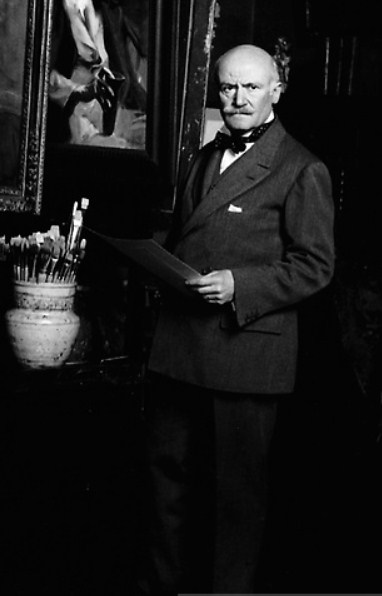
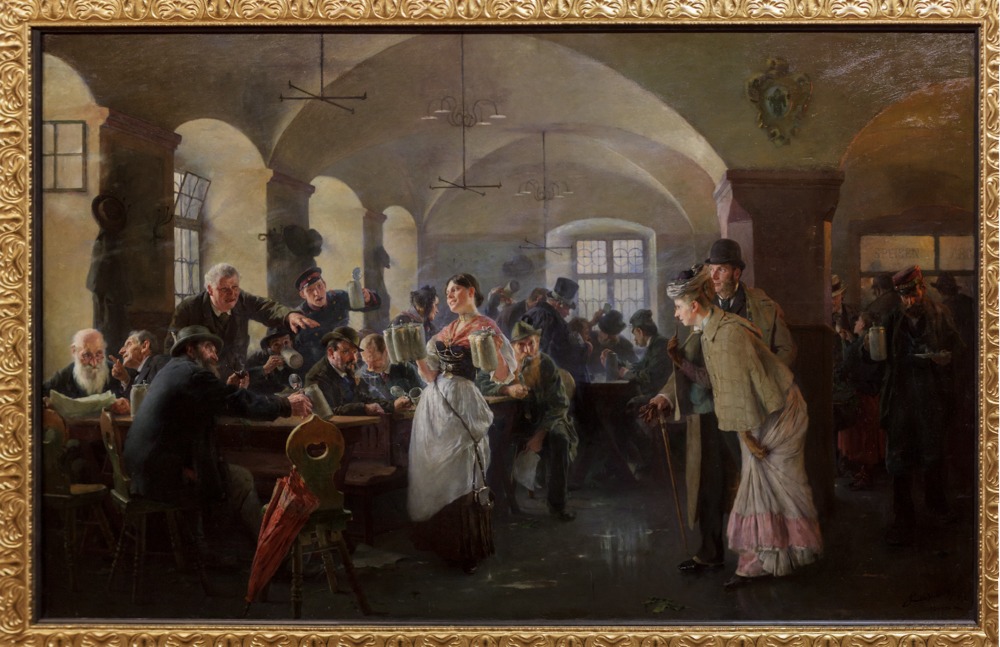
In Munich, he meets Lucy Guinness, daughter of the Henry Guinness, probably you have read this name on some cans of liquid.
He fell in love. He asked her to pose for his painting Hofbrauhaus, for the English lady who is admiring the pub life. She said yes, and they spent some wonderful time creating this picture. Not long after this, they departed, but he had to wait another six years to see her again. Finally in 1900, after eight years, they were allowed to married when Lucy’s family agreed to it. He waited eight long years to marry the women he loved. Later on, when they got settled, they tried to buy back this painting as it held a sentimental value for them, but they couldn’t.
In Lucy’s diary, there is a note about De Laszlo’s statement: “My first love is art and would always be so, whoever I marry shall know about this.
He had a very strong discipline to paint throughout his entire life.
Around the age of thirty, he completed the following questionnaire.
Q. Your favourite masculine character traits?
A. Tirelessly to strive for an aim in life, never to do things by half.
Q. Your favourite feminine character traits?
A. Femininity-the truth.
Q Your idea of happiness?
A. To come near to one’s aim in life, through which I hope to achieve
spiritual contentment.
Q. Which profession seems to you the best?
A. All professions which are pursued with love.
Q. Who would you like to be if not yourself?
A. Velasquez.
Q. Where would you like to live?
A. In a place where my soul can find nourishment.
Q. When would you like to have lived?
A. At any period when it was possible to develop freely and independently.
Q. Your idea of unhappiness?
A. To be disturbed in a state of enchantment, of admiration.
Q. Your chief character trait?
A. To strive for one’s aims regardless.
Q. Your favourite authors?
A. Petőfi, Arany, Heine, Shakespeare.
Q. Your favourite painters and sculptors?
A. Van Dyck, Lawrence, Reynolds, Velasquez, Titian.
Q. Your favourite composer?
A. Wagner, Mozart.
Q. Your favourite colour and flower?
A. Green, carnation.
Q. Your favourite hero in history?
A. Napoleon I, Rakoczi, Kossuth.
Q. Your favourite names?
A. Elek, Viki, Margaret, Lucy, Ida, Ella.
Q. Which historical character do you dislike most?
A. King Richard III, General Zurlinden.
Q. What faults would you most easily forgive?
A. Promises given in a state of rapture.
Q. Your dislike that you cannot overcome?
A. Of tastelessness.
Q.. What are you afraid of?
A. Physical injury.
Q. Your favourite food and drink?
A. Goulash, pure spring water, cold.
Q. Your temperament?
A. Lively, passionate, impulsive.
Q. Your motto?
A. Nihil admimri mihi desperari (To admire nothing is for me to despair)
Usually, when he painted his main subject, he did not stop there, but painted other people on the site as well, such as a wife, children or other family members. It can be truly seen that he loved what he was doing and that his primary motive wasn’t just the money.
In 1900 he had been commissioned to paint the Pope, Leo XIII, for the Hungarian National Gallery. For most of the people, it was impossible just to get close to the Pope, and he was about to paint him. He did a couple of preliminary drawings, and then he started to paint. After the second sitting the Pope looked at the painting, and he said “he looks like Voltaire”, and he was not happy with it. De Laszlo asked for his permission to start again.
What a pressure and frustration he had to deal with! Anyone who tried to paint a live model knows there is some tension of time, no matter how good you are. The model needs breaks, wants to move, is bored, etc. Add to that someone like a Pope who probably has a busy schedule and is short with time. Not to mention that he had to master himself, and put aside all his doubts, worries, and problems and be confident to paint even when he was facing the Pope! More pressure. Leo, the XIII., did not like the painting after the second, one and a half hour long sitting. Typically a painting goes through stages and at some point they don’t look great, but they don’t necessarily stay that way.
He continued and his efforts were fruitful. He had been rewarded with some of the Pope’s personal items and the Grand Gold Medal At the Paris International Exhibition in April 1900. It was a happy ending for this story.
He was generally in high demand, and overworked. Close friends, his wife Lucy and his doctors regularly advised him to have more rest and work less. Once they prepared for a family holiday, he took about 40 canvases with him. It looks like he did not consider painting as work at all. Usually, he painted landscapes on this occasions for relaxation.
He visited the United States a couple of times, and on one of those occasions, he was to paint the portrait of Einstein. Unfortunately, Einstein cancelled the session at the last minute. 🙁
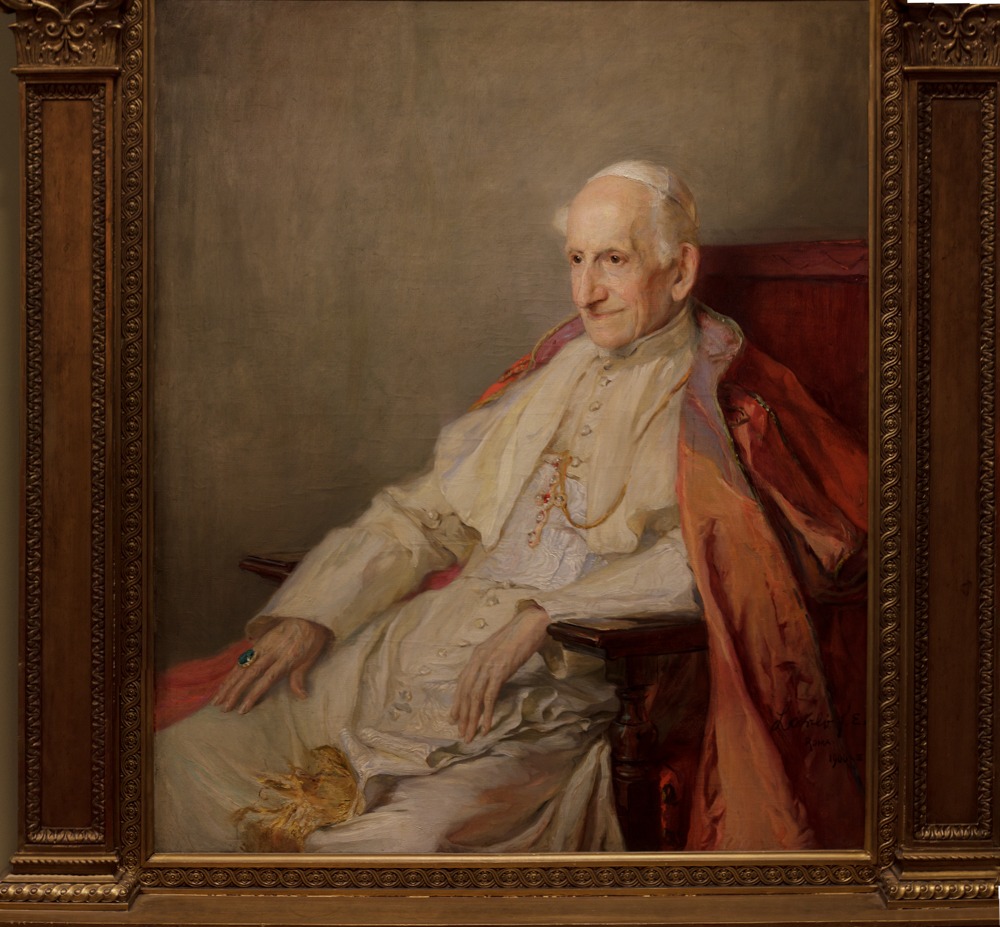
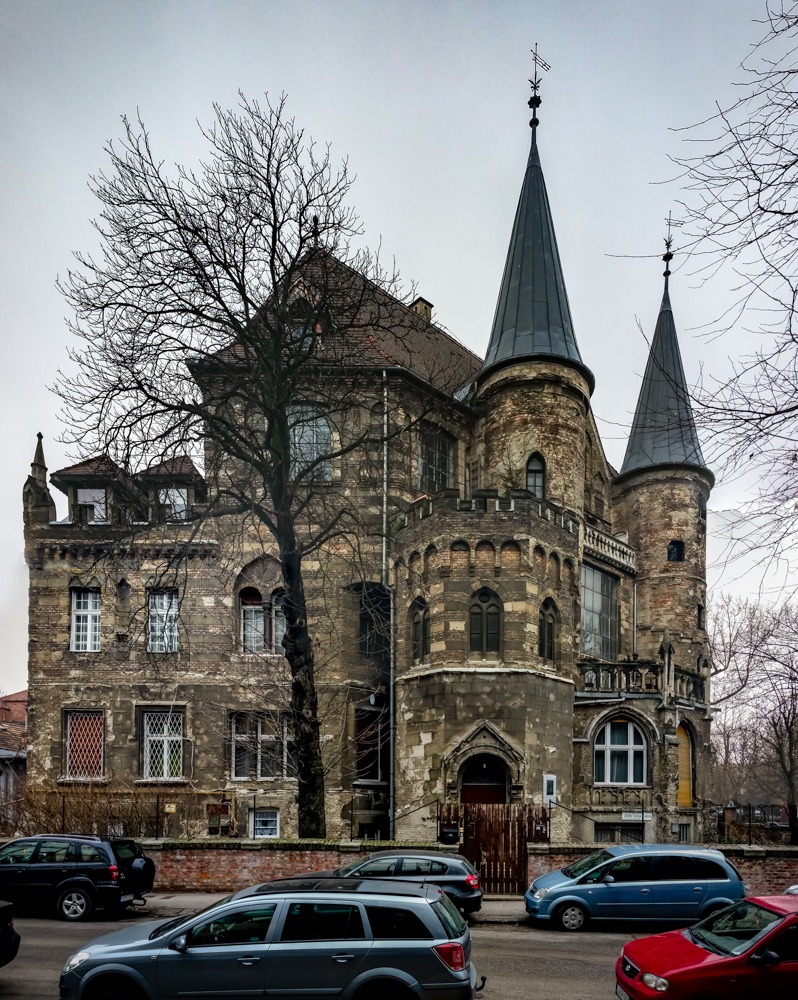
Here is a picture of his house in Budapest, Hungary. Before the couple moved to England, they lived here. The most interesting feature of this house is the north facing studio window. The house was specially built around the studio’s north window.
The Hungarian National Gallery exhibit three of his paintings, I had the pleasure to stand in front of them to study and sketch them.
In front of great work of art, I always think of how much the artist would be conscious about the people, who will stand in front of the picture. Would they ever think about how many people will visit, admire, study or draw it in the future? It is a straight connection I can see, what they saw when they were painting, but is still so far in time and yet it comes alive as I look at it. That always astounds me.
I hope I could “paint” an idea about him with these words. For me, he is truly inspirational and one of the greatest portrait painter. About his technique of painting, or method, and about his book I will write in another article.
Please feel free to browse his paintings at the Philip Alexius de László Catalogue Raisonné.
